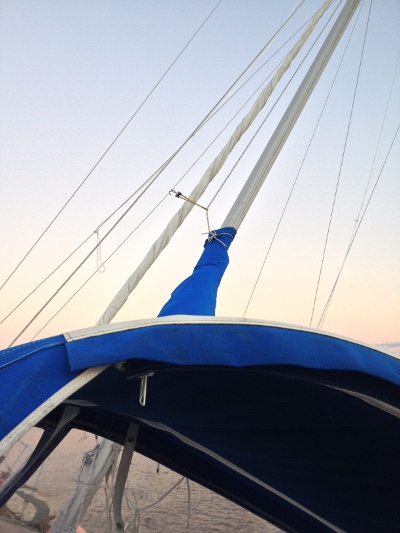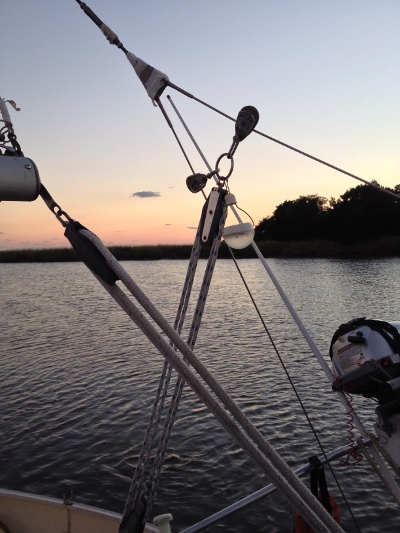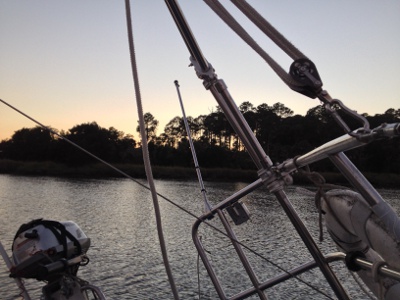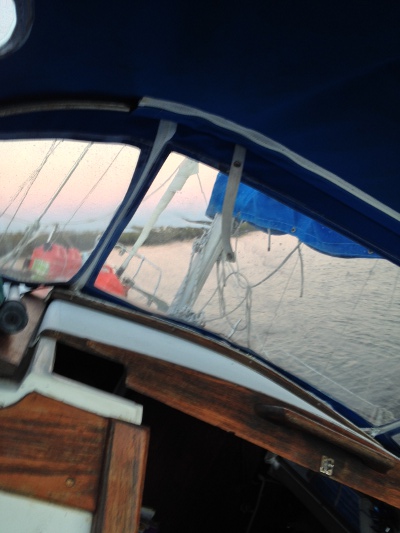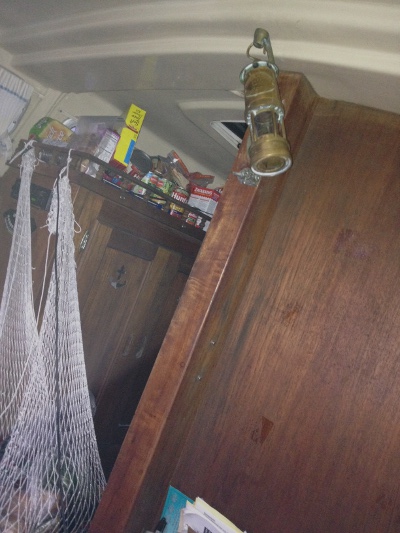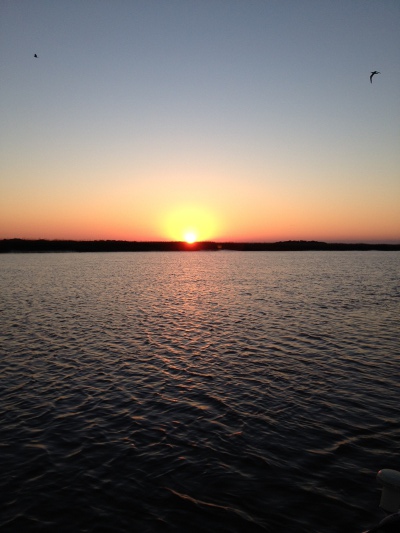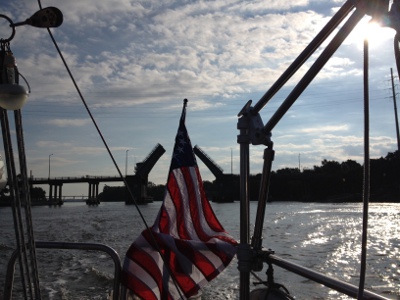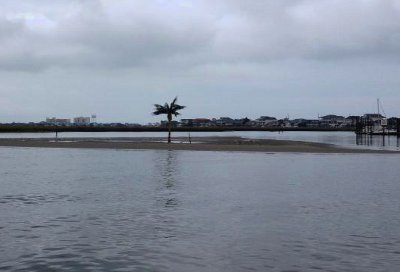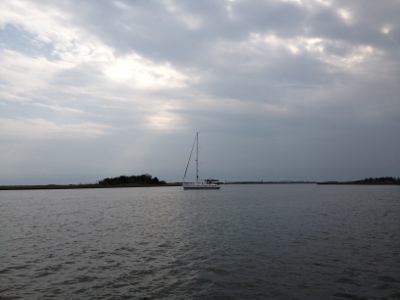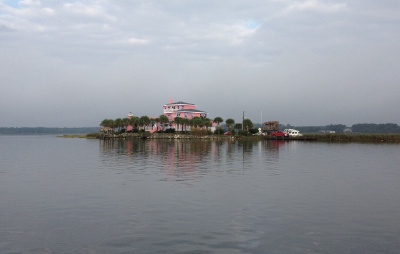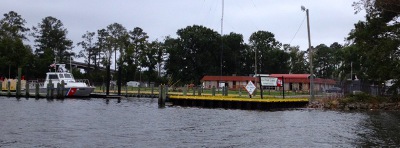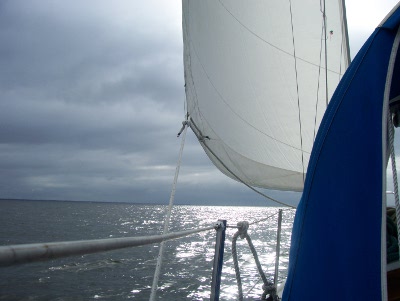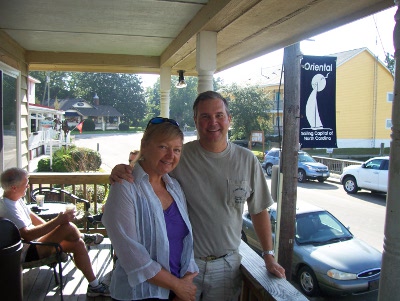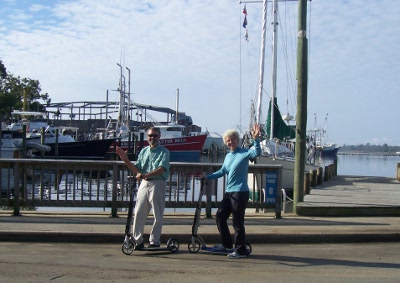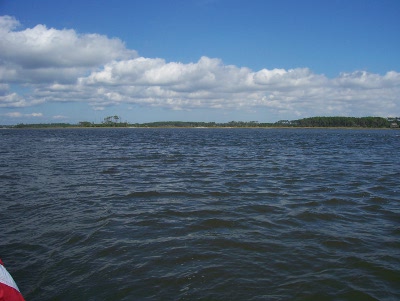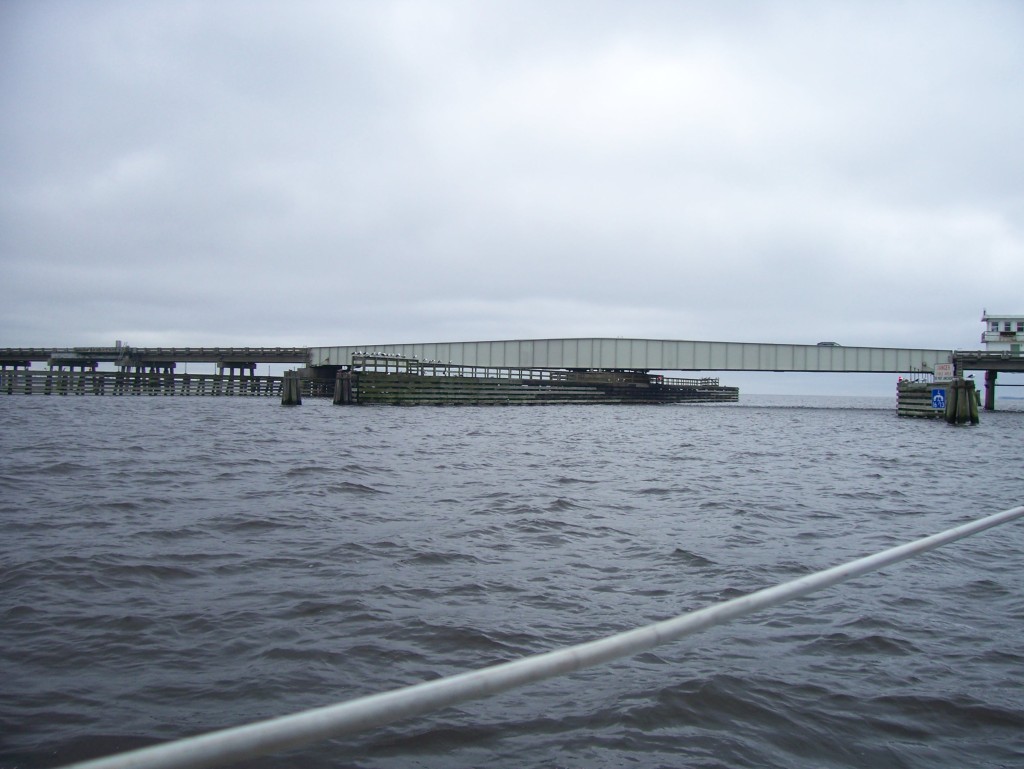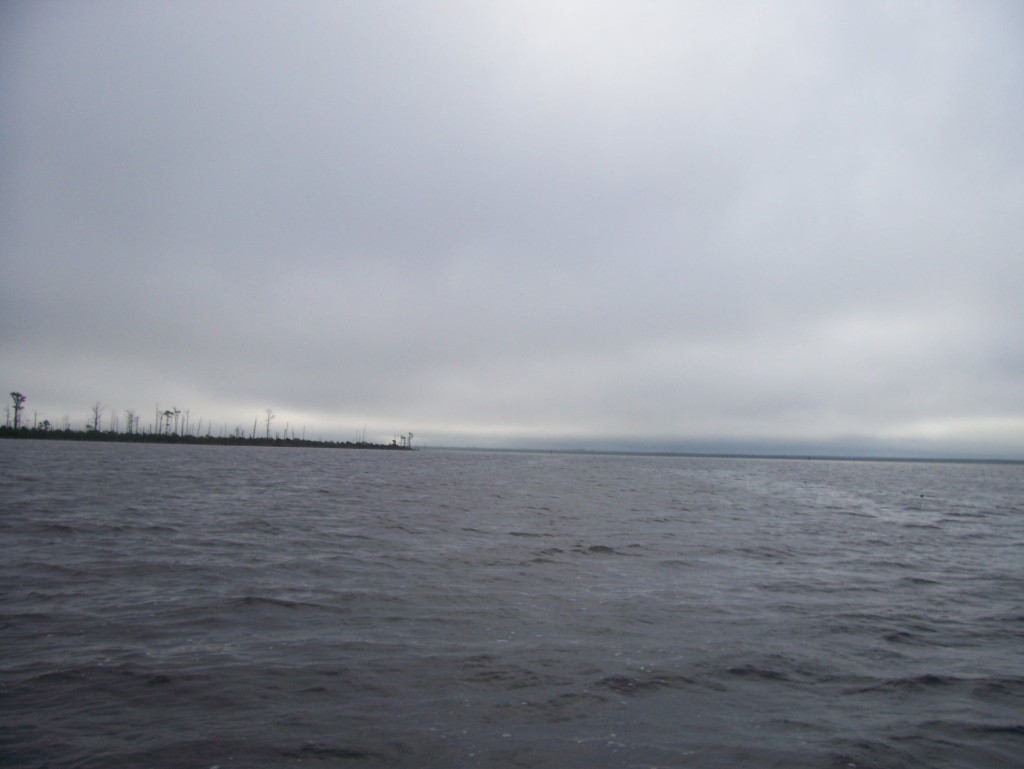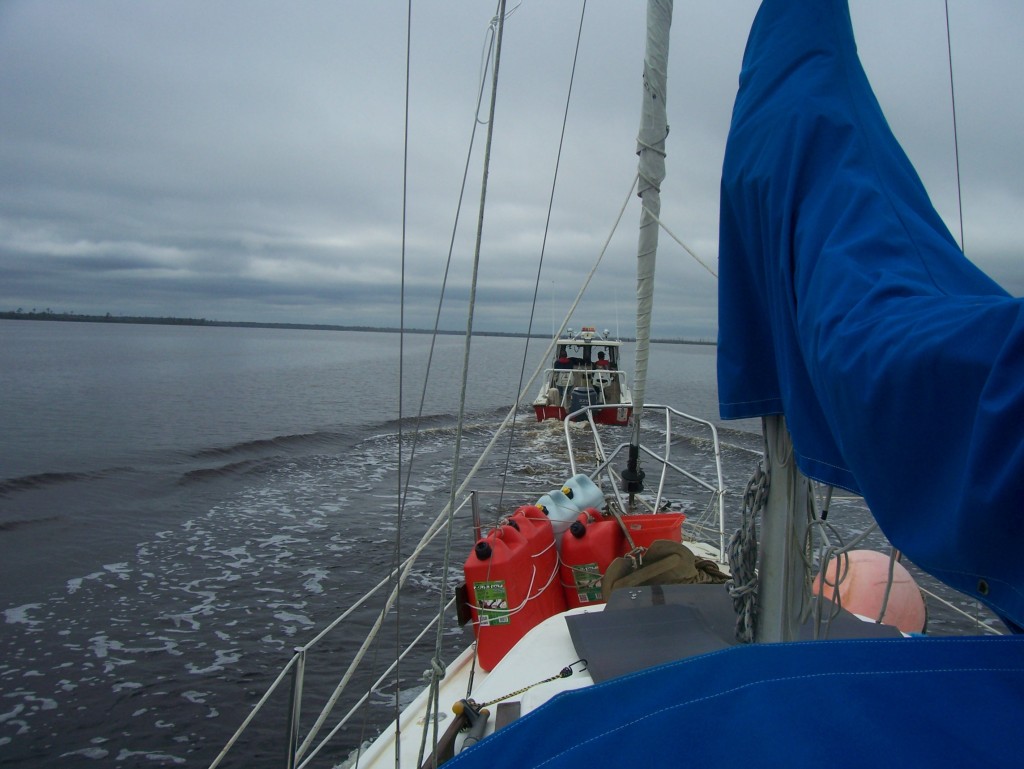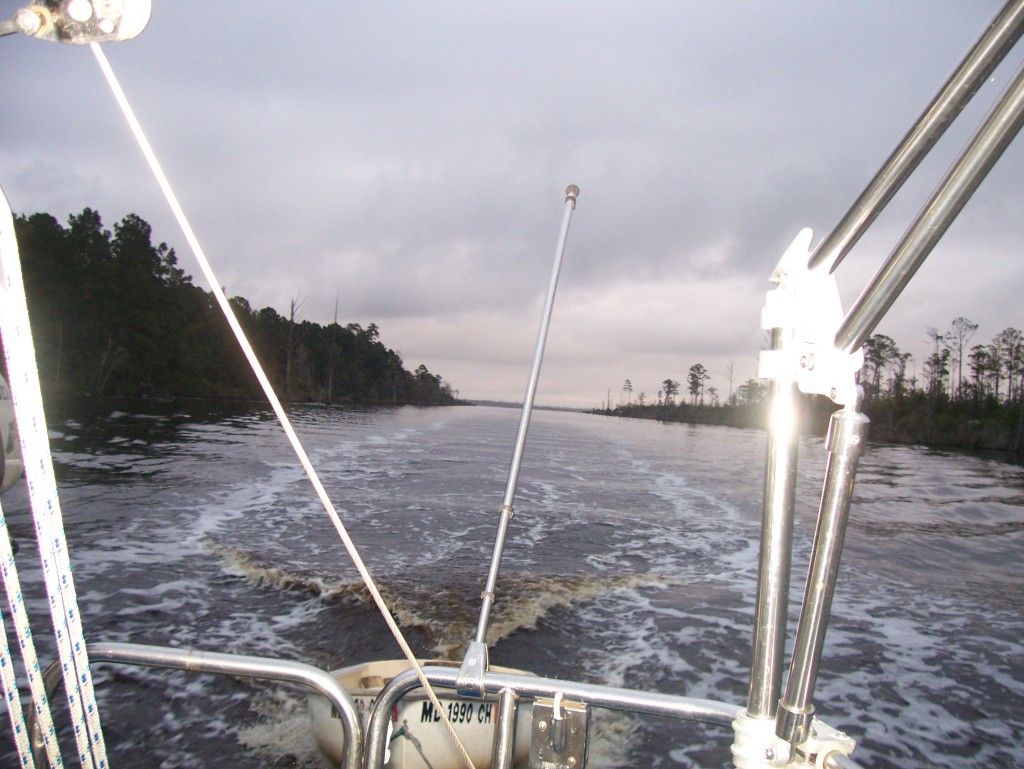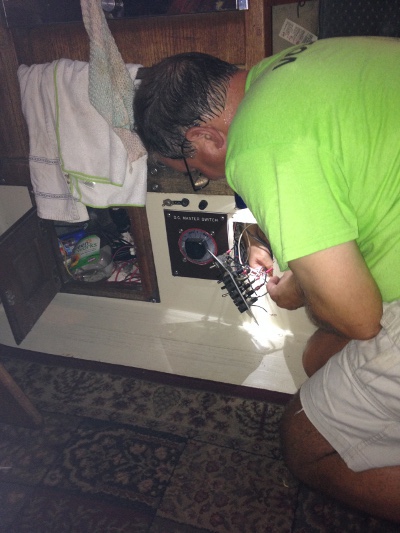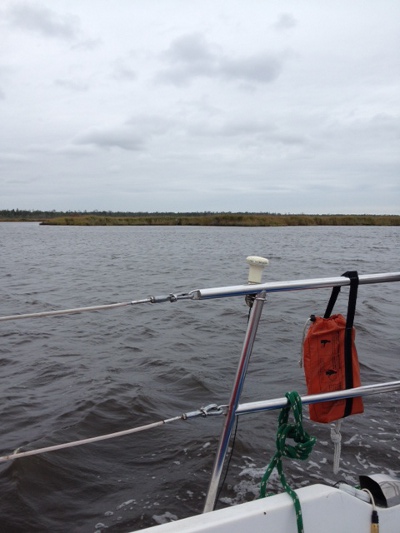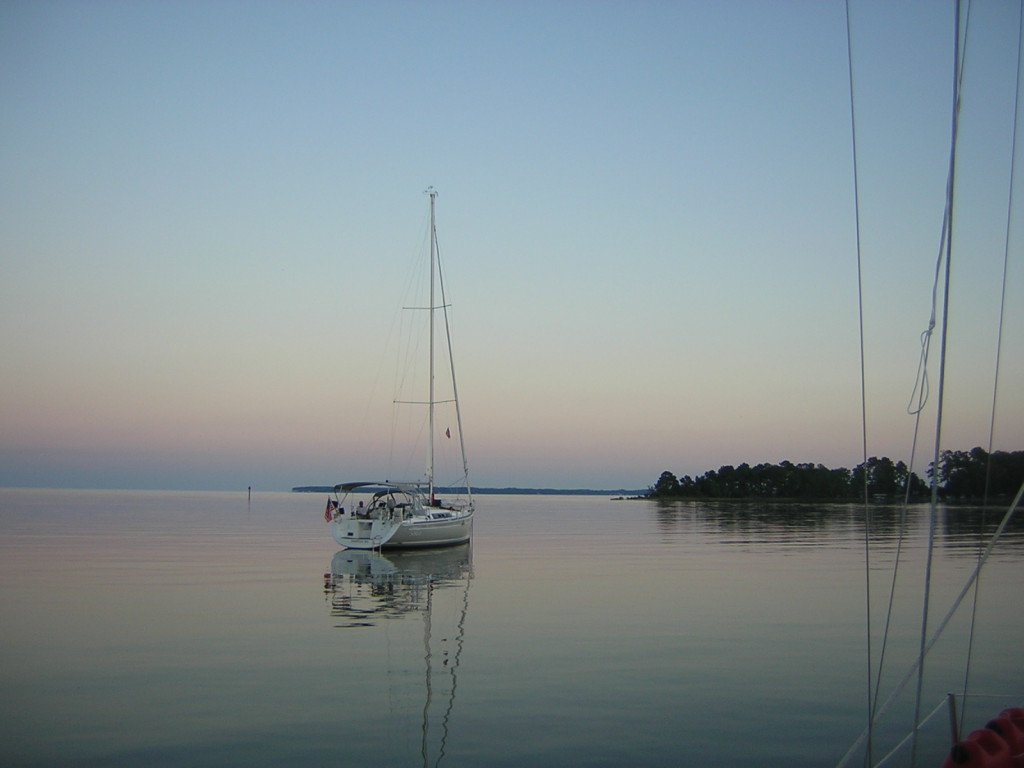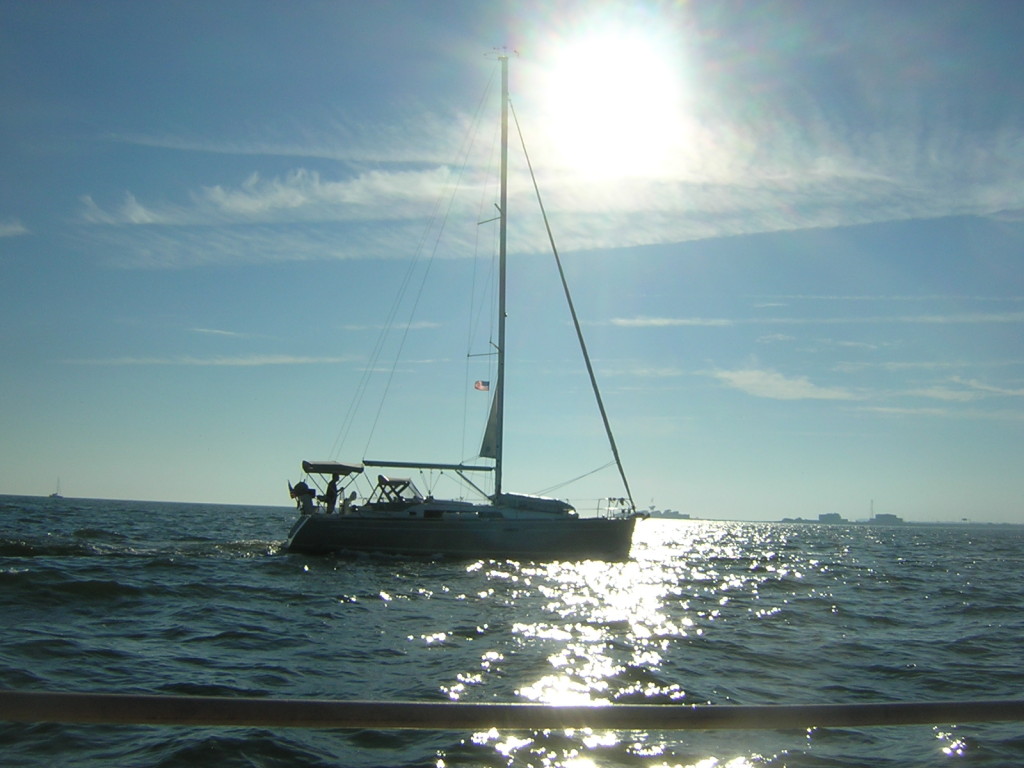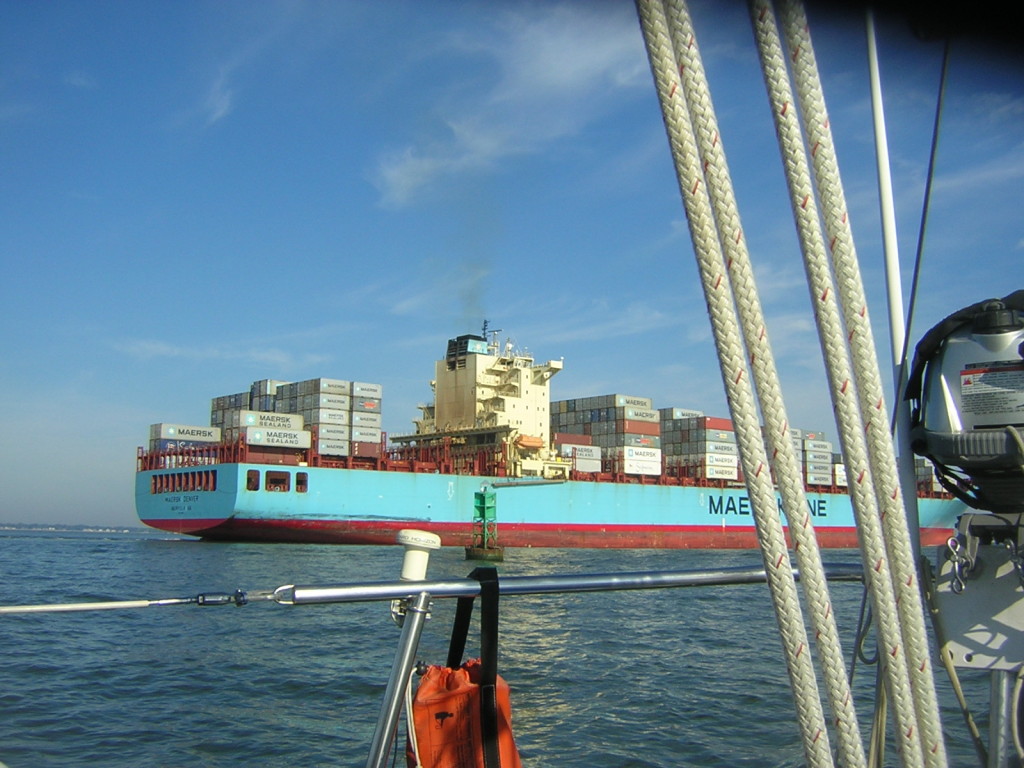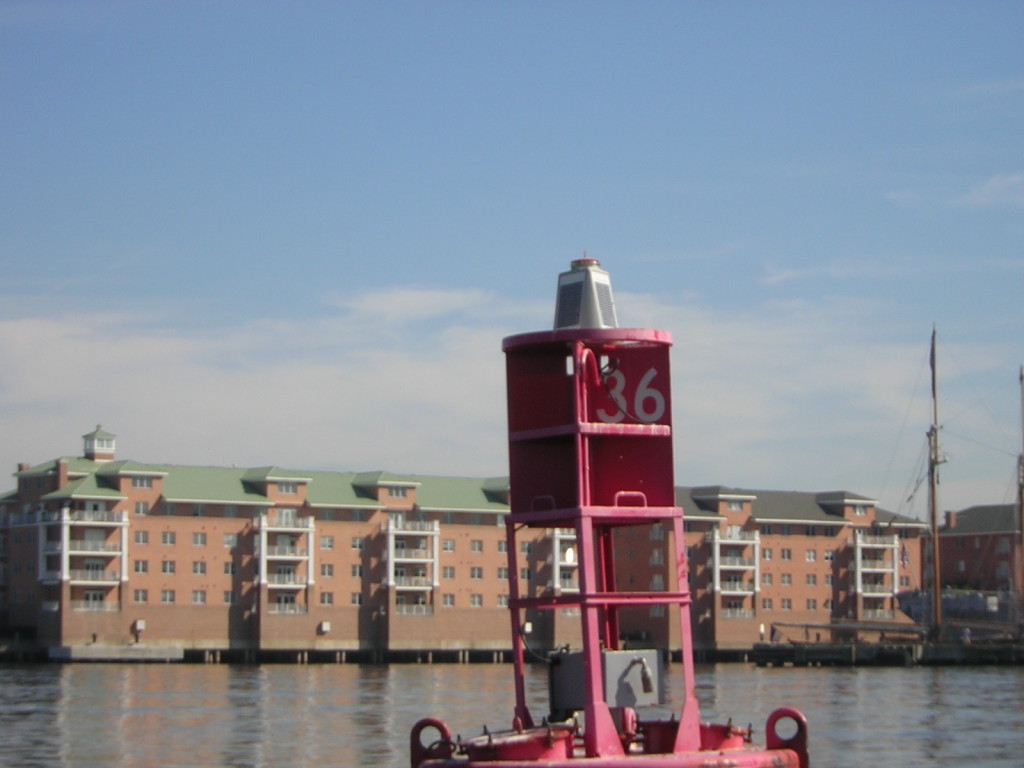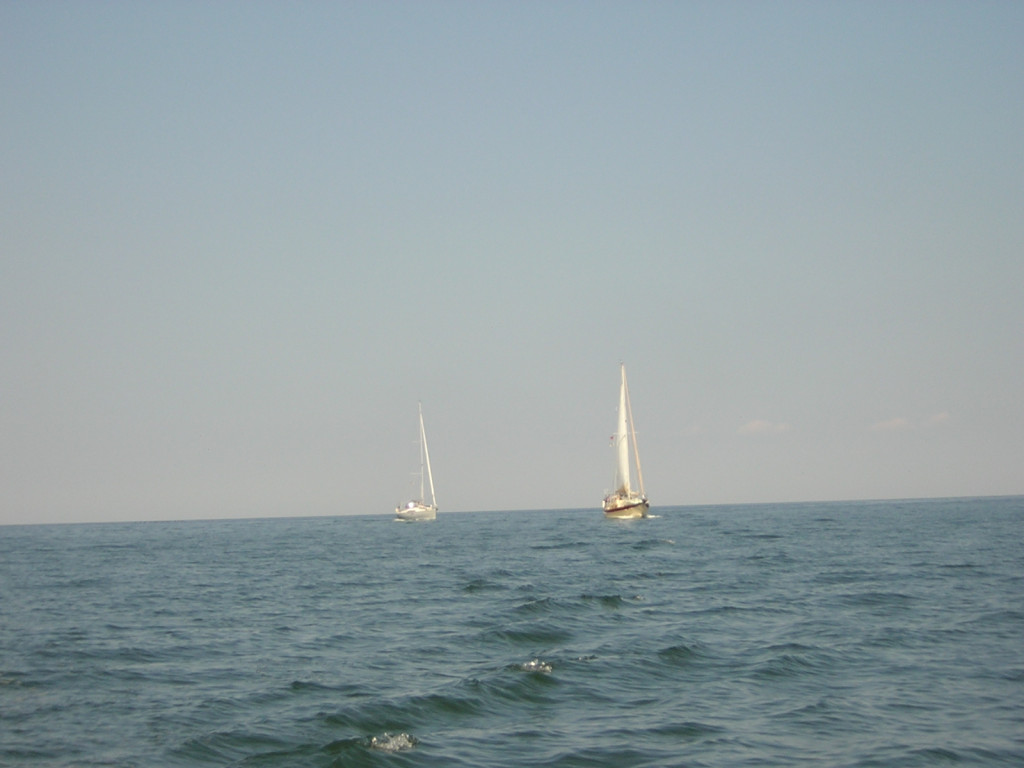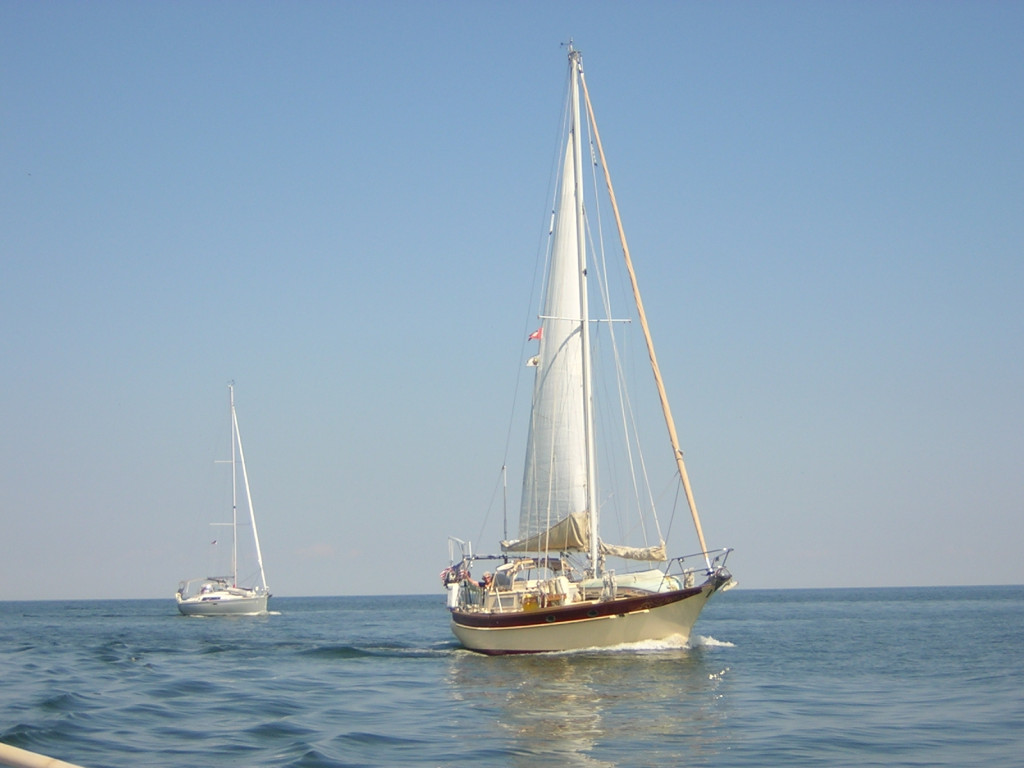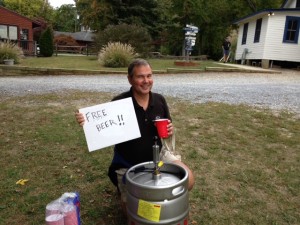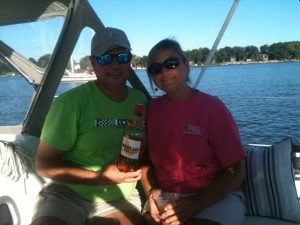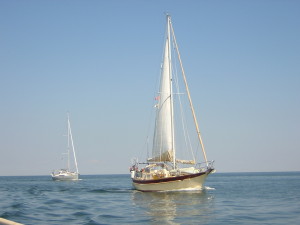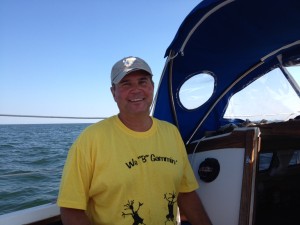“There are two types of cruisers on the Intracoastal Waterway – Those who have run aground, and those who will.” – Attributed to Mark Doyle, author, On the Water Chartguides
Leaving Charleston, we find fewer and fewer grand homes along the waterfront, and a gradual return to wild places. I am becoming more confident in steering and can help spell Phil for a few hours at a time. I have the GPS chart plottter, the charts, and a quick yell (such as, “It’s getting shallow here!”) will bring him to my side.
We plan to anchor at Rock Creek, 47 miles south of Charleston. Thankfully, I am not the one driving as we turn off the ICW and enter the creek. Our cruising guide cautions us to watch for shoaling and a shallow place near the trees, so we plan to drop the anchor in 18 feet of water just short of the trees. Like a dog who circles before lying down in the grass, we need to circle our anchor spot to be sure we have sufficient depth when the current swings us around. “She swings like a monkey,” Phil says.
We are just making the first turn when the depth sounder switches from 18 feet to 5 feet. Phil reacts quickly, slowing the boat, but before we can reverse, the depth sounder registers a 3, and the boat comes to a full and sudden stop. Oops.
Catmandu needs 4.5 feet to float, so we were hard aground. Phil puts the engine in reverse and tries to wiggle us out, but she won’t budge. The next plan is to “kedge,” a new word for me. He explains that he can put the heavy anchor in the dinghy, row out to deeper water and drop it in. Then, with a line running back to the boat, he can “kedge” us off the mud by pulling the boat toward the anchor.
I am getting a little worried, but Phil is not at all, and goes about readying the anchor, climbing into the dinghy and rowing away. He drops the big anchor and then rows the dinghy back to the boat, carrying the line. Wrapping it around the winch, he starts to pull. As the line tightens, he pulls harder. I wish I could help, but all I can manage is to look more and more worried. The boat doesn’t budge.
If you’re going to run aground, it’s best to do so in a rising tide. Eventually, the water will come back and float your boat. It’s 5 o’clock, and the tide is falling. The water is rushing out of the creek all around us and the boat is starting to make strange creaking noises. I must have looked panicked, because Phil says suddenly, “It’s going to be all right.”
In my mind, the boat was about to settle into the mud on its side, and nothing would keep the water from rushing in. Having seen “The Guardian” the night before, I am imagining a red Coast Guard rescue copter lowering a basket for us, and the rest of our trip cancelled as Catmandu becomes salvage. Well, it wasn’t quite that bad, but I’ve never been on a boat that was slowly settling on the bottom, and I begin to notice that we are not quite upright.
“What’s going to happen?” I ask.
“We will probably heel (lean) to starboard as the tide goes out,” Phil explains, “but when it starts to come back in after 7pm, we’ll gradually be upright again.”
I do have faith in his experience and ability, and he knows the boat well from 13 years of ownership. But I am looking around for help, and spot a small shrimping boat a few hundred yards away. “Can they help us?” I ask.
“There’s nothing they can do. We are stuck.” he says. “We might as well have a drink.”
I have to laugh at that. He has a way of making everything okay. The boat is heeling badly, but Phil seems able to walk around the tilted deck, take pictures of the sunset, and descend the crooked ladder to make gin and tonics. We sit on the deck (on the high side) and look down into the dinghy. “Maybe we should sleep in the dinghy tonight.” At least the dinghy will be level.
As we are drinking and trying to balance on the high side of the cockpit, Phil tells me he once tried to anchor in Cocktail Cove on the coast of Maine and couldn’t get the anchor to hold after three tries. On the fourth try, he hooked the anchor in 11 feet of water. From fatigue after a long day of fighting the coastal Maine waters, he considered it a good anchorage and went to bed. The tide in that area was nine feet. By the time morning came, the boat was on its side, the fresh water tank was emptying out of the galley faucet, and they were walking on the bulkheads to get around. Using the head was out of the question. They waited for the incoming tide, and the boat floated free and upright.
“Let’s have dinner, and watch a movie,” Phil suggests. I think he’s enjoying this. I need to have a little faith, relax, and go along. So I get out the iPhone and take a few pictures. When we carefully pick our way down the tilted stairs, I settle into the settee and lean back. It’s like being in the dentist’s chair.
Phil checks the tilt-o-meter: 34 degrees! He offers to cook dinner, but I don’t see how. The stove is tilted beyond its gimbel, and the dinner plan was tacos! I can just see tomatoes and lettuce shreds dropping everywhere from tilted bowls, and hot taco fillings spilling in our laps. “Okay, but not tacos!” He fries up a couple of veggie italians and we eat them in bread.
As we settle down into the settee, Phil rigs a bungie cord to hold the laptop on the table, and we lie back, literally on our backs. He looks over at me and smiles. “Living the dream!” he says. My laughter probably sounds a little hysterical.
As we are watching Pirates of the Caribbean, Dead Man’s Chest, the boat is making creaking and groaning noises. The yacht lamp is lit, and leans at an angle over the computer. By the time he gets up to make Jiffy Pop, the boat is starting to right itself. We set the alarm for midnight so we can adjust the anchor when high tide comes.
“Hello! Are you okay in there?” Someone hails us from outside. Phil climbs out into the tilted cockpit to find the shrimp boat just off the stern. They understand that there is nothing they can do to help, but they offer us their leftover ice. They had been on a “shrimping date,” and saw our plight. “You’re on the edge of a mud flat,” the man says. “When you go out, be sure to back out.” Phil explains that he has a kedge anchor out, and the man says, “Oh, okay. You know what you’re doing.” (I’m glad to hear it.)
At midnight, we get up and hope the boat is floating free. Phil gets out on deck first. I hear him say, “Oh!” Right behind him, I climb into the cockpit and gasp. Over the stern rail, in the light of our little hanging lantern, I see grass. Grass? Yes, marsh grass. We have not only floated free, but we have floated into the marsh grass on the opposite shore. Luckily, the anchor is holding and we are afloat. All we have to do is get to the middle and adjust the anchor. I’m driving, and Phil pulls the anchor and drops it again in a better spot.
We go to bed. The next morning is cold but bright. We can’t wait to get out of there. On the way, I see what a brilliant, beautiful sunrise we have. Phil is looking at it, too. “Did you ever see the Poseidon Adventure?” he asks. Oh, yes.
There’s got to be a morning after.
